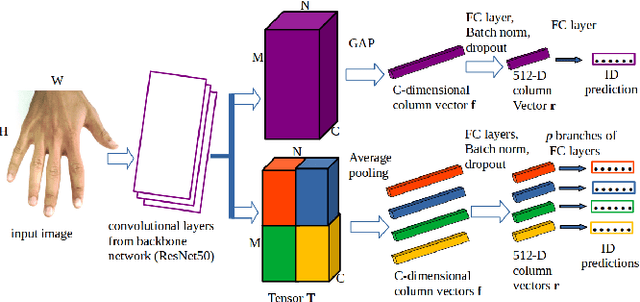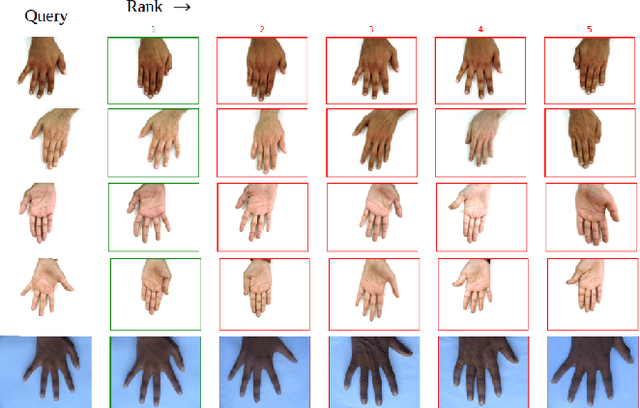Ritesh Vyas
Hand-Based Person Identification using Global and Part-Aware Deep Feature Representation Learning
Jan 19, 2021



Abstract:In cases of serious crime, including sexual abuse, often the only available information with demonstrated potential for identification is images of the hands. Since this evidence is captured in uncontrolled situations, it is difficult to analyse. As global approaches to feature comparison are limited in this case, it is important to extend to consider local information. In this work, we propose hand-based person identification by learning both global and local deep feature representation. Our proposed method, Global and Part-Aware Network (GPA-Net), creates global and local branches on the conv-layer for learning robust discriminative global and part-level features. For learning the local (part-level) features, we perform uniform partitioning on the conv-layer in both horizontal and vertical directions. We retrieve the parts by conducting a soft partition without explicitly partitioning the images or requiring external cues such as pose estimation. We make extensive evaluations on two large multi-ethnic and publicly available hand datasets, demonstrating that our proposed method significantly outperforms competing approaches.
A Collaborative Approach using Ridge-Valley Minutiae for More Accurate Contactless Fingerprint Identification
Sep 19, 2019



Abstract:Contactless fingerprint identification has emerged as an reliable and user friendly alternative for the personal identification in a range of e-business and law-enforcement applications. It is however quite known from the literature that the contactless fingerprint images deliver remarkably low matching accuracies as compared with those obtained from the contact-based fingerprint sensors. This paper develops a new approach to significantly improve contactless fingerprint matching capabilities available today. We systematically analyze the extent of complimentary ridge-valley information and introduce new approaches to achieve significantly higher matching accuracy over state-of-art fingerprint matchers commonly employed today. We also investigate least explored options for the fingerprint color-space conversions, which can play a key-role for more accurate contactless fingerprint matching. This paper presents experimental results from different publicly available contactless fingerprint databases using NBIS, MCC and COTS matchers. Our consistently outperforming results validate the effectiveness of the proposed approach for more accurate contactless fingerprint identification.
 Add to Chrome
Add to Chrome Add to Firefox
Add to Firefox Add to Edge
Add to Edge